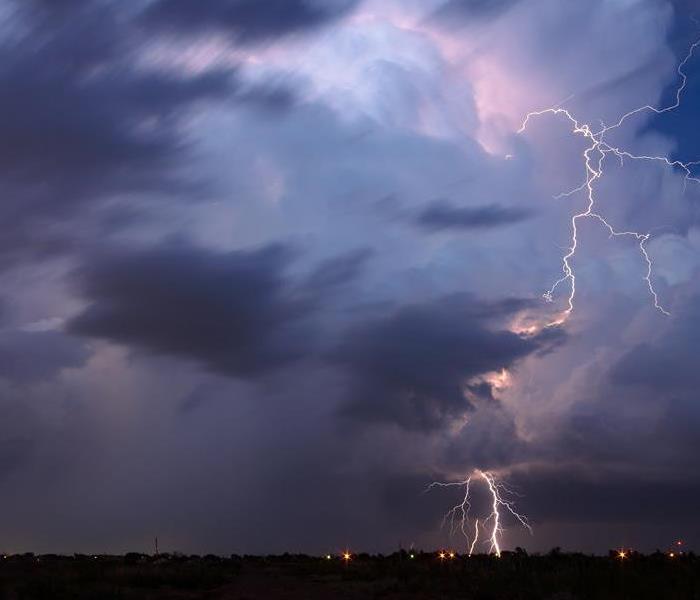The Challenges of Urban Storm Preparedness in the Northeast
9/12/2023 (Permalink)
When it comes to storm preparedness, urban areas in the Northeast face their own set of unique challenges. The combination of dense population, concrete surfaces, and limited green spaces poses specific obstacles for residents and city officials. In this blog post, we will explore the unique challenges of urban storm preparedness in Northeast cities and offer strategies to help residents stay safe during severe weather events.
Limited Green Spaces
One of the biggest challenges of urban storm preparedness in Northeast cities is the limited availability of green spaces. With concrete dominating the landscape, there is a scarcity of trees and other vegetation that can absorb excess rainwater and reduce the risk of flooding. This lack of natural drainage increases the likelihood of urban flooding, making it crucial for residents to be aware of potential risks in their neighborhoods and have a plan in place to seek higher ground or evacuation if necessary.
Overburdened Stormwater Systems
Urban areas in the Northeast often rely on stormwater systems to manage heavy rainfall. However, these systems may already be overburdened due to their age and inability to handle the increased volume of water associated with severe storms. Combined with limited green spaces, this can lead to quicker and more severe flooding. Residents should be aware of areas prone to flooding and avoid them during storms. Additionally, city officials need to invest in upgrading stormwater systems to ensure they can effectively handle heavy rainfall.
Transportation and Evacuation Challenges
Transportation and evacuation can pose significant challenges in densely populated areas during severe weather events. Urban congestion, limited evacuation routes, and compromised public transportation systems can make it difficult for residents to find safe shelter or escape to safer areas. It is crucial for residents to have a clear evacuation plan in place, including knowing the locations of designated shelters and alternative routes. City officials should prioritize developing and communicating effective evacuation strategies tailored to the unique needs of their urban population.
Power Outages and Utility Failures
Urban areas heavily rely on consistent and robust power and utility services. However, severe storms can result in power outages and failures in critical infrastructure. The lack of power and other utilities can have significant consequences, such as disruptions to communication, transportation, and access to essentials like clean water and medical services. Residents should have emergency kits that include backup power sources, flashlights, and a supply of non-perishable food and water. Cities must invest in resilient infrastructure and have contingency plans to quickly restore power and utilities after storm events.
Communication and Education
Effective communication and education play a vital role in urban storm preparedness. However, reaching a large and diverse population in urban areas can be a challenge. Local authorities should invest in comprehensive and accessible communication strategies that utilize multiple channels, including social media, emergency alert systems, and multilingual outreach. Providing residents with information on storm preparedness and clear instructions during severe weather events can help save lives and prevent injury.
Urban storm preparedness in Northeast cities comes with its own set of challenges. By raising awareness among residents, investing in resilient infrastructure, and improving communication strategies, cities can better prepare for and mitigate the impact of severe weather events. Together, we can make our urban areas safer and more resilient in the face of storms.




 24/7 Emergency Service
24/7 Emergency Service
